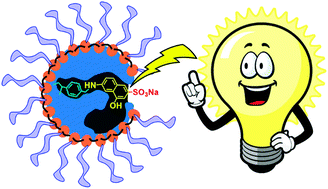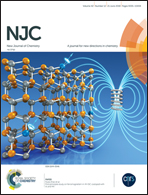Fluorescent nanoparticle sensors with tailor-made recognition units and proximate fluorescent reporter groups†
Abstract
The molecular recognition unit of a fluorescent sensor is its most cumbersome part to design and synthesize, but is key to the specificity of the sensor. Molecular imprinting within cross-linked micelles using easily synthesized modular templates allowed us to create analyte-specific binding sites with a nearby fluorescent probe. This strategy makes it straightforward to vary the recognition unit independent of the reporting unit, making the sensor potentially applicable to a wide range of molecular analytes.



 Please wait while we load your content...
Please wait while we load your content...
